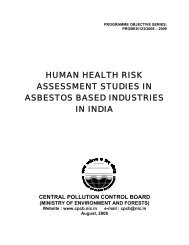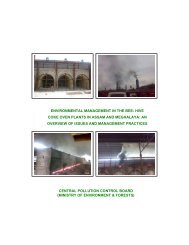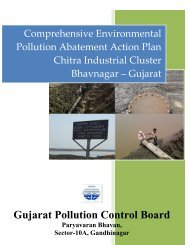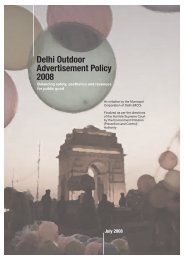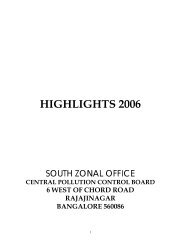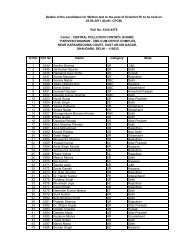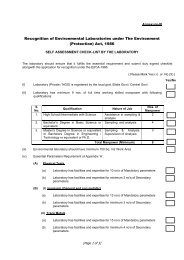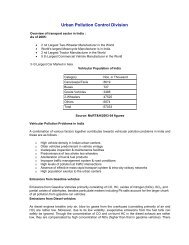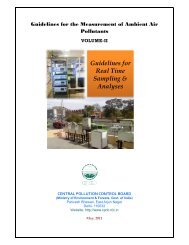Q ST QUA TAT ALIT US O TY IN OF W N IN WA NDIA ATER A- 2 R ...
Q ST QUA TAT ALIT US O TY IN OF W N IN WA NDIA ATER A- 2 R ...
Q ST QUA TAT ALIT US O TY IN OF W N IN WA NDIA ATER A- 2 R ...
You also want an ePaper? Increase the reach of your titles
YUMPU automatically turns print PDFs into web optimized ePapers that Google loves.
1.1.2 Industrial RequirementAnother important factor that influences the state of water security in India, is the extent ofindustrialization. In India, the maximum utilization was 5 per cent in 2000 (FAO 2000).Industrial activity requires large amounts of freshwater for activities such as boiling, cleaning,air-conditioning, cooling, processing, transportation and energy production. As the countryrapidly industrializes, greater quantities of water will be required.The positive side of this trendis that water used in industrial processes can be recycled, unlike in agriculture where very littleof it is actually consumed.1.1.3 Municipal RequirementThe water policy has ranked the requirement of water for drinking purposes as prime. It isestimated that about 50 billion litres of municipal water is required every day based on thepopulation figures of urban India which is about 360 million. The urban population may exceedover 800 million by the year 2050 and the resultant municipal water requirement will be of themagnitude of over 110 billion litres per day. Besides the requirement of rural population (1.1billion) shall be about 44 billion litres per day for the year 2050.1.2 Climate ChangeIn the context of anticipated global warming due to increasing atmospheric greenhouse gases, itis necessary to evaluate the possible impact on freshwater resources of the country. Potentialimpacts of global warming on water resources include enhanced evaporation, geographicalchanges in precipitation intensity, duration and frequency (together affecting the average runoff),soil moisture, and the frequency and severity of droughts and floods. Future projectionsusing climate models point to an increase in the monsoon rainfall in most parts of India, withincreasing greenhouse gases and sulphate aerosols. Relatively small climatic changes can havehuge impact on water resources, particularly in arid and semi-arid regions such as North-WestIndia. This will have impacts on agriculture, drinking water, and on generation of hydroelectricpower, resulting in limited water supply and land degradation. Apart from monsoon rains, Indiauses perennial rivers which originate in the Hindukush and Himalayan ranges and depend onglacial melt-waters. Since the melting season coincides with the summer monsoon season, anyintensification of the monsoon is likely to contribute to flood disasters in the Himalayancatchment. Rising temperatures will also contribute to a rise in the snowline, reducing thecapacity of these natural reservoirs, and increasing the risk of flash floods during the wet season.Increase in temperatures can lead to increased eutrophication in wetlands and fresh watersupplies.1.3 Current and Future Water RequirementsIn 1990, the total water withdrawal was estimated at 552 bcm i.e. 30 per cent of the country'srenewable water resources (1869 bcm). The contribution from surface water was 362 bcm, while3



